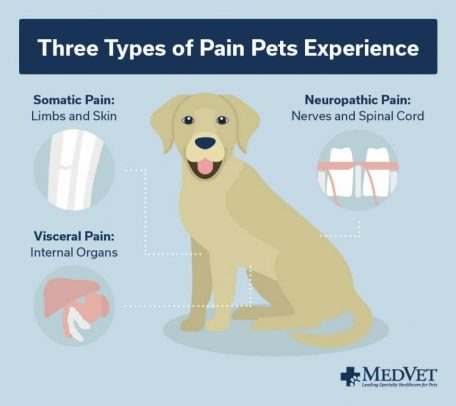As a professional in the field of veterinary medicine, I understand the importance of being able to recognize when your beagle is in pain. Dogs, particularly beagles, are known for their high pain tolerance and their ability to mask discomfort. But how can you tell if your beagle is in pain?
When it comes to identifying pain in your beagle, it is essential to pay close attention to their behavior and physical signs. Look out for subtle changes in their activity levels, appetite, and behavior. Your beagle may become less active, refuse to eat, or display aggression or irritability. In addition to these behavioral changes, physical signs such as limping, whimpering, or excessive grooming in a specific area can also indicate pain.
If you suspect your beagle is in pain, watch out for signs such as whimpering, excessive licking of a specific area, decreased activity, loss of appetite, and changes in behavior. Beagles may also become more aggressive or show signs of discomfort. It’s important to consult a veterinarian for a proper diagnosis and treatment plan. Regular check-ups and observing your beagle’s behavior closely can help detect pain early and ensure their well-being.

Recognizing Signs of Pain in Your Beagle
As a responsible and caring pet owner, it is crucial to be able to recognize when your beagle is in pain. Dogs, like humans, experience pain and discomfort when they are unwell or injured. However, since dogs cannot communicate their pain verbally, it is essential to pay attention to their behavior and body language to determine if they are in pain. In this article, we will discuss the signs that indicate your beagle may be experiencing pain and how you can help them.
Changes in Eating Habits
One of the first signs that your beagle may be in pain is a noticeable change in their eating habits. Beagles are known for their hearty appetites, so if you notice that your beagle is suddenly disinterested in food or is eating significantly less than usual, it could be an indication that they are experiencing pain. Dogs in pain may also refuse treats or their favorite snacks.
If you suspect that your beagle is in pain and they have stopped eating or have a decreased appetite, it is important to consult your veterinarian for a thorough examination. Loss of appetite can be a symptom of various underlying health issues, and a professional will be able to diagnose and provide appropriate treatment.
Changes in Activity Levels
Another sign that your beagle may be in pain is a noticeable change in their activity levels. Dogs in pain may be reluctant to participate in their usual activities, such as going for walks, playing fetch, or engaging in their favorite games. They may also appear lethargic, spend extended periods sleeping, or lack their usual enthusiasm.
Keep an eye out for any decrease in your beagle’s physical activity and monitor their energy levels. If you notice a significant decline in their activity levels without any apparent reason, it is essential to have them evaluated by a veterinarian. Reduced activity can indicate pain or discomfort, and early intervention can prevent further complications.
Changes in Posture and Movement
Pay attention to any changes in your beagle’s posture and movement as it can provide valuable insight into their pain levels. Dogs in pain may exhibit certain body language cues, such as:
- Abnormal gait or limping
- Reluctance to climb stairs or jump on furniture
- Hunching or arching their back
- Stiffness or difficulty getting up or lying down
- Guarding certain body parts by avoiding touch or growling when touched
Observe your beagle’s movement and body language carefully. If you notice any of these signs, it is crucial to consult your veterinarian for a proper evaluation and diagnosis. Painful conditions such as arthritis, injuries, or muscle strains can be the cause of these changes, and early intervention can help manage and alleviate their pain.
Vocalizations and Behavioral Changes
When your beagle is in pain, you may notice changes in their vocalizations and behavior. They may whimper, whine, or yelp without an apparent reason. These vocalizations can be a way for them to communicate their discomfort to you. Additionally, dogs in pain may display behavioral changes, such as:
- Irritability or aggression
- Restlessness or pacing
- Withdrawal or hiding
- Panting excessively
- Excessive licking or chewing on a particular body part
Any noticeable changes in your beagle’s vocalizations or behavior should be taken seriously. Consult your veterinarian to rule out any underlying medical conditions and to provide appropriate pain management for your beagle.
Changes in Facial Expressions
Facial expressions can provide valuable clues about your beagle’s pain. Dogs in pain may have a tense and furrowed brow, a closed or partially closed mouth, or their ears may be pinned back. Additionally, they may have dilated pupils or avoid making eye contact. These subtle changes in their facial expressions can indicate that they are experiencing discomfort.
Take the time to observe your beagle’s facial expressions, especially during interactions and when you approach them. If you notice any of these signs, it is important to consult your veterinarian for a comprehensive examination to identify the source of their pain and provide appropriate treatment.
How to Help Your Beagle in Pain
If you suspect that your beagle is in pain, it is essential to seek veterinary care to address their discomfort and ensure their well-being. Here are some steps you can take to help your beagle:
Consult Your Veterinarian
If you notice any signs of pain in your beagle, the first step is to consult your veterinarian. They will be able to conduct a thorough examination, run diagnostic tests if necessary, and determine the cause of your beagle’s pain. Your veterinarian will also be able to provide appropriate pain management strategies and treatments based on their findings.
Follow the Recommended Treatment Plan
Your veterinarian may prescribe medications or recommend other treatments to alleviate your beagle’s pain. It is crucial to follow their instructions carefully and administer any medications or treatments as prescribed. Stick to the recommended treatment plan to ensure your beagle receives the necessary relief from their discomfort.
Make Your Beagle Comfortable
Provide your beagle with a comfortable and quiet space where they can rest and recover. Consider using orthopedic or supportive bedding to alleviate any joint or muscle pain. Ensure that the area is free from any hazards that may cause additional discomfort or injury.
You may also want to adjust their diet to support their overall health and aid in their recovery. Consult your veterinarian for dietary recommendations that can promote your beagle’s well-being.
Provide Gentle Exercise
While rigorous exercise may not be suitable for a beagle in pain, gentle exercise can be beneficial for their well-being. Short, controlled walks can help keep their joints mobile and promote circulation. However, it is crucial to follow your veterinarian’s recommendations regarding exercise restrictions and guidelines.
Monitor Your Beagle’s Progress
Keep a close eye on your beagle’s progress as they receive treatment and pain management. Monitor any changes in their behavior, eating habits, and activity levels. If you notice any worsening symptoms or new signs of discomfort, notify your veterinarian immediately.
Conclusion
Being able to recognize the signs of pain in your beagle is crucial for their well-being. By paying attention to changes in eating habits, activity levels, posture and movement, vocalizations and behavior, and facial expressions, you can determine if your beagle is in pain. Remember to consult your veterinarian for a proper evaluation and treatment plan. Your veterinarian can provide the necessary care and help alleviate your beagle’s discomfort, ensuring they live a happy and pain-free life.
Key Takeaways:
- Your beagle may be in pain if they show signs of limping or favoring certain body parts.
- Changes in appetite, drinking, or bathroom habits can indicate pain in your beagle.
- Vocalization such as whimpering, growling, or yelping can be a sign of pain in your beagle.
- Behavioral changes such as aggression, restlessness, or avoiding interaction may suggest your beagle is in pain.
- Observing your beagle’s body language, such as a tense posture or reluctance to move, can help identify pain.
Frequently Asked Questions
Pain can be difficult to detect in animals, but it’s important to be able to recognize when your beagle is in pain. Knowing the signs can help you provide the necessary care and treatment to keep your furry friend happy and healthy. Here are some common questions and answers about how to tell if your beagle is in pain.
1. What are the signs that my beagle may be in pain?
There are several signs that may indicate that your beagle is in pain. These can include:
-Excessive panting or drooling
-Whining, whimpering, or crying
-Limping or reluctance to move
-Loss of appetite or weight loss
-Changes in behavior, such as aggression or lethargy
If you notice any of these signs, it’s important to consult with your veterinarian to determine the cause of your beagle’s pain and develop a appropriate treatment plan.
2. Can I tell if my beagle is in pain by looking at their body language?
Yes, your beagle’s body language can provide valuable clues about their pain levels. Some signs to look out for include:
-Restlessness or inability to get comfortable
-Tucked tail or hunched posture
-Licking or biting at a specific area of the body
-Avoiding stairs or obstacles
-Changes in facial expression, such as a furrowed brow or flattened ears
By paying attention to your beagle’s body language, you can better understand their pain and take appropriate action.
3. Is vocalization a common sign of pain in beagles?
Yes, vocalization is a common sign of pain in beagles. They may whine, whimper, or cry as a way of expressing their discomfort. It’s important to note that not all beagles will vocalize their pain, so it’s important to look for other signs as well.
If your beagle is vocalizing and showing other signs of pain, it’s essential to consult with your veterinarian for a proper diagnosis and treatment.
4. Can changes in appetite or weight loss indicate that my beagle is in pain?
Yes, changes in appetite and weight loss can be indications that your beagle is experiencing pain. Pain can cause a loss of appetite, leading to weight loss over time. If your beagle is not eating as usual or has noticeable weight loss, it’s important to consult with your veterinarian to determine the cause.
Your veterinarian can help diagnose and address any underlying issues causing your beagle’s pain and help get them back to their normal eating habits.
5. How can I tell if my beagle is in chronic pain?
Chronic pain is pain that lasts for an extended period, often longer than three months. Some signs that your beagle may be experiencing chronic pain include:
-Persistent limping or stiffness
-Difficulty getting up or lying down
-Changes in behavior, such as increased aggression or withdrawal
-Reluctance to participate in regular activities
-Changes in sleep patterns
If you suspect that your beagle is in chronic pain, it’s important to consult with your veterinarian. They can evaluate your beagle’s condition and recommend appropriate treatment options to manage their pain and improve their quality of life.

How To Tell If Your Dog Is In Pain (21 secret signs of pain in dogs)
If you’re wondering how to tell if your beagle is in pain, there are a few signs to watch for. Look for changes in behavior, like loss of appetite, lethargy, or aggression.
Other indicators may include excessive panting, whining, shaking, or difficulty moving around. If you notice any of these symptoms, it’s important to consult with a veterinarian to determine the cause and provide appropriate treatment.
